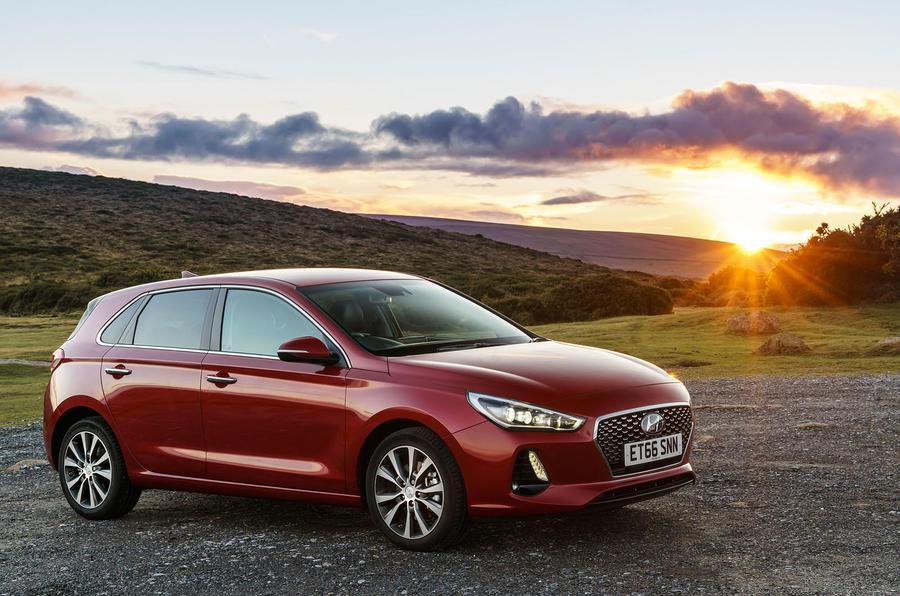In almost a decade, the Hyundai i30 has become one of the pillars of this ambitious brand’s range. Competing with the Volkswagen Golf and Ford Focus, it has long traded on affordability, reliability and generous equipment levels.
In 2017, you need a bit more than that to be truly class-competitive though. Enter a new i30, one based on the old one but sporting an entirely new look outside and in. It’s roomier, packed with smart technology and even the drive has become more dynamic, we’re told, but no less comfortable. Is it now a pillar of strength?
An intriguing new engine option is a 118bhp 1.0-litre T-GDi three-cylinder petrol engine. This downsized engine performs well in the smaller i20 supermini, but you have to work it surprisingly hard here to make progress. You’ll need to do a fair bit of gearshifting to maintain progress – and it’s best ignoring the eco-minded gearshift indicator entirely.
This will make it tiring to drive when fully laden, and economy’s likely to suffer as well. Not that it’s particularly standout to begin with: 56.5mpg is decent, but a 1.0-litre Skoda Octavia is better still, while feeling a fair bit livelier with it. CO2 emissions of 115g/km are also nothing to write home about.
The same goes for the way it drives. The new i30 never feels as nimble as, say, a new Vauxhall Astra through corners, with noticeable body roll, yet the ride isn’t particularly standout either. Indeed, we’d say it’s probably firmer than before.
Steering is nicely weighted – unusually, it’s heavier than some may expect, a rarity these days – but genuine feel is in short supply. The firm certainly has its work cut out turning this into a convincing i30N hot hatch.
The bits that Hyundai’s traditionally scored better in show a marked improvement, though. Plastics are nice to the touch and the crisp, clear 8.0in touchscreen that comes on most models is easy to use. Both Apple CarPlay and Android Auto are included, as is wireless charging on some models.
Every i30 has Bluetooth, DAB and USB port; for good safety marks, they also all have lane departure warning, lane-keep assist, forward collision warning system with autonomous emergency braking, all-round parking sensors and lots of airbags.
Other positives include a reasonably spacious rear and a very roomy boot, plus of course those value-focused prices. But it’s still all not enough to make this perfectly decent new car into something that stands out in a class of real heroes. The i30 is competent, but no more.
2017 Hyundai i30 SE Nav
Price £19,645
Engine 3cyl, 998cc, turbocharged, petrol
Power 118bhp at 6000rpm
Torque 126lb ft at 1500-4000rpm
Gearbox Six-speed manual
Kerbweight 1342kg
0-62mph 11.1secs
Top speed 118mph
Economy 56.5mpg
CO2/tax band 115g/km, 20%
Rob Adams is a writer for AutoCar.
Subscribe to Independent Premium to bookmark this article
Want to bookmark your favourite articles and stories to read or reference later? Start your Independent Premium subscription today.


Join our commenting forum
Join thought-provoking conversations, follow other Independent readers and see their replies